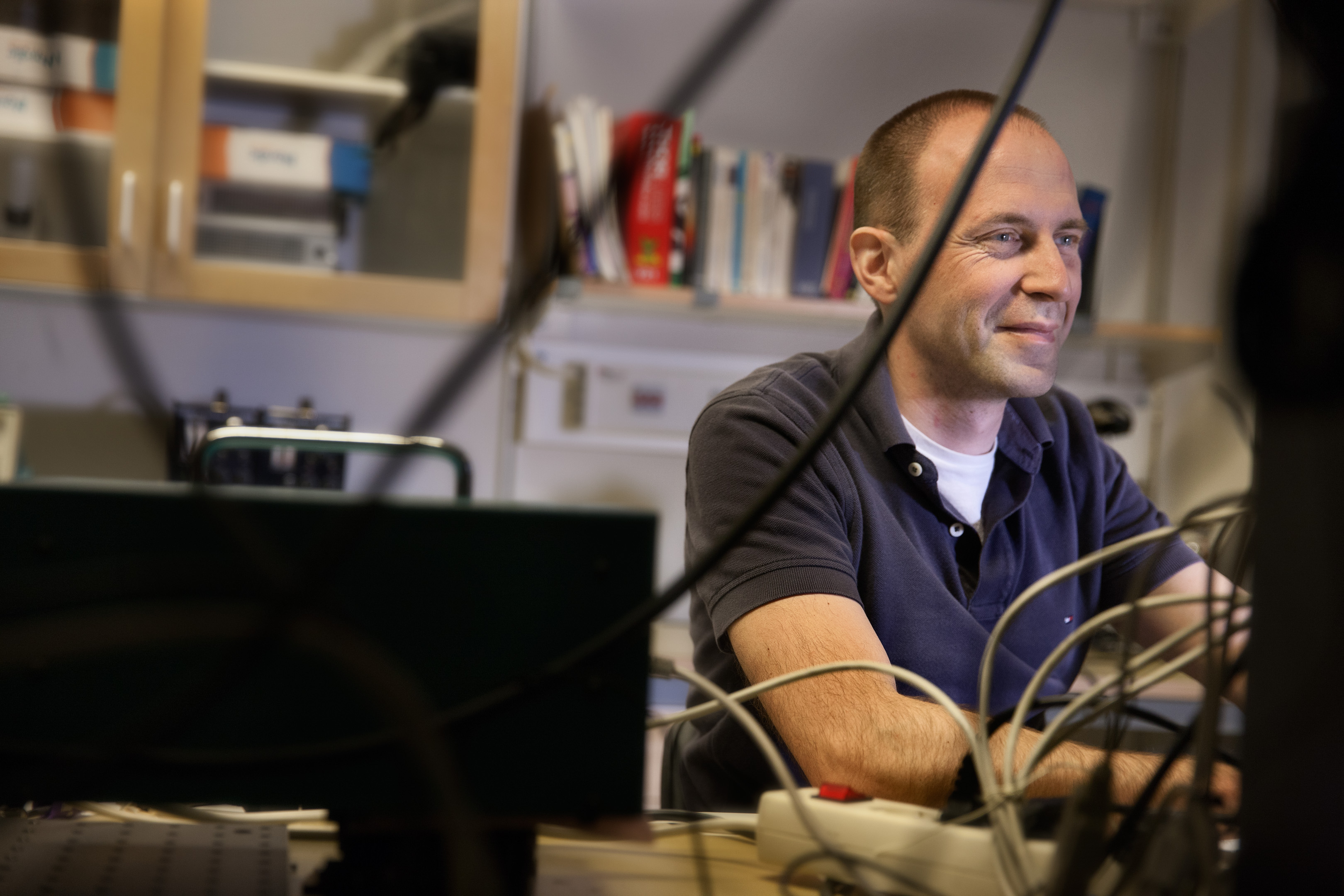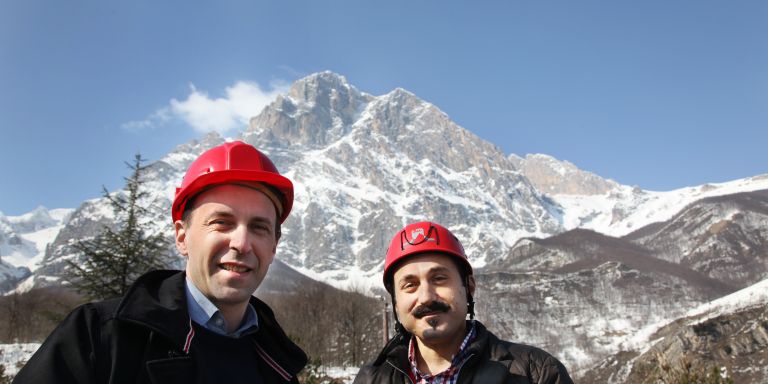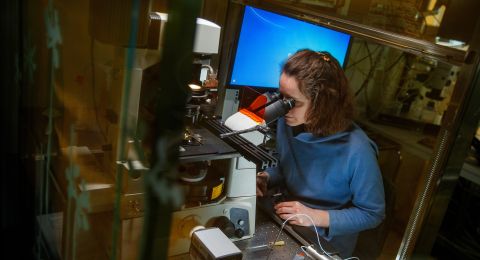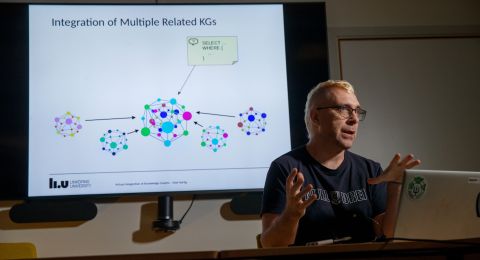
Project Grant 2014
Discovering dark matter particles in the laboratory
Principal investigator:
Jan Conrad, Professor of Astroparticle Physics
Co-investigators:
Stockholm University
Thomas Schwetz-Mangold
Nordita, Nordic Institute for Theoretical Physics
Katie Freese
Chalmers University of Technology
Christian Forssén
Institution:
Stockholm University
Grant in SEK:
SEK 28.9 million over five years
“It’s crunch time,” says Jan, who is Professor of Astroparticle Physics at Stockholm University. He is researching into dark matter, which comprises about 23 percent of all the energy in the universe, but is shrouded in mystery. Soon, within a few years, he hopes the mists will have cleared.
Jan has recently returned home from the Gran Sasso massif in the Italian Apennines. There, in cavernous chambers, reached by a road tunnel, an exciting experiment is in progress.
Researchers from the whole world are trying to find new types of particle that can explain the mystery of dark matter. The most promising candidate is known as a WIMP – weakly interacting massive particle.
“It is believed that WIMPs were produced straight after the Big Bang. Since then they have simply existed. When we work out what properties a particle of this kind must have, we find that it is probably fairly heavy – perhaps 100 times heavier than a hydrogen atom.”
Xenon collisions
Earlier, Jan focused on an “indirect method”, in which traces of gamma radiation are used in an attempt to identify decaying particles of dark matter. The method being used at Gran Sasso is “direct”.
“It means that we are trying to see when a hypothetical dark matter particle collides with matter on Earth. The matter in question is a noble gas called xenon. It also has a heavy atomic nucleus, and we believe it weighs roughly the same as a WIMP.”
Jan explains that when two bodies of the same mass collide, the transfer of energy between them is at its most efficient. So if the WIMP collides with a xenon atom, there will be maximum recoil, which is what the researchers hope to be able to see and record using their xenon detectors.

But in order to detect the very weak signal from the dark matter, it is first necessary to reduce background interference from radioactive isotopes and cosmic rays. This is why the experiments are taking place deep underground.
“We have to reduce interference from other particles. Otherwise, the detector would read signals all the time, and we would have no chance to see the WIMP. There are no cosmic rays in the tunnel, but there is still natural radioactivity, which a number of research teams are trying to reduce in various ways.”
Data analysis
The detector uses ultra-clean xenon, cooled to liquid state, a technique that has become more widespread, having started on a small scale 20 years ago. The driving spirit behind the major Xenon Project, which is building the world’s most sensitive and largest detector of its kind, is an Italian astrophysicist by the name of Elena Aprile.
Thanks to funding from the Knut and Alice Wallenberg Foundation, Jan and his team have now joined the Xenon Project.
“I hope we can help create a form of ‘cross-fertilization’, offering a somewhat different approach than the one they have had so far. The Foundation’s support opens the door to a completely new field of research in Sweden, and if nothing else, the result will be an extremely well educated generation of experimental physicists. This is the ultimate experiment in physics.
We have worked out what these signals should look like if it is dark matter, and we are good at advanced data analysis. There are plans to build a data analysis center in Stockholm to provide the computing power needed for the calculations.”
The analytical methods being developed in the project include machine learning, a field straddling computer science, A.I. and mathematical statistics.
“It’s a really hot topic. Google, Facebook and similar companies use these methods to find connections in their user databases. In our field of high-energy physics we have used artificial neural networks of this kind for many years precisely to differentiate between signals and cosmic background radiation.”

Getting ready to start
The Gran Sasso chamber experiments can be classified according to the quantity of xenon gas used, i.e. the size of detector. The first detector used 10 kg. This was followed by 100 kg. Fall 2015 will see the inauguration of a detector using 1 metric ton, which is due to yield results in a couple of years.
“It’s a beautifully performed experiment; it’s impressive. The next detector will use several metric tons of xenon. That is really the phase that the Wallenberg project will be supporting, but things are quite fluid, since we are using data from several experiments.”
Jan has already bought the xenon that will be used in the one-ton experiment. It is his ticket to be part of the Xenon Project.
“If you work out the probability of a WIMP colliding with xenon, we are reaching a magnitude at which a breakthrough should soon occur.”
Several methods
Research on the indirect method using gamma rays is continuing in parallel, a project for which Jan is already receiving support as a Wallenberg Academy Fellow.
“The methods complement one another, and approach the solution from different directions. Having both is a good way of covering all eventualities.”
Text Susanne Rosén
Translation Maxwell Arding
Photo Magnus Bergström



